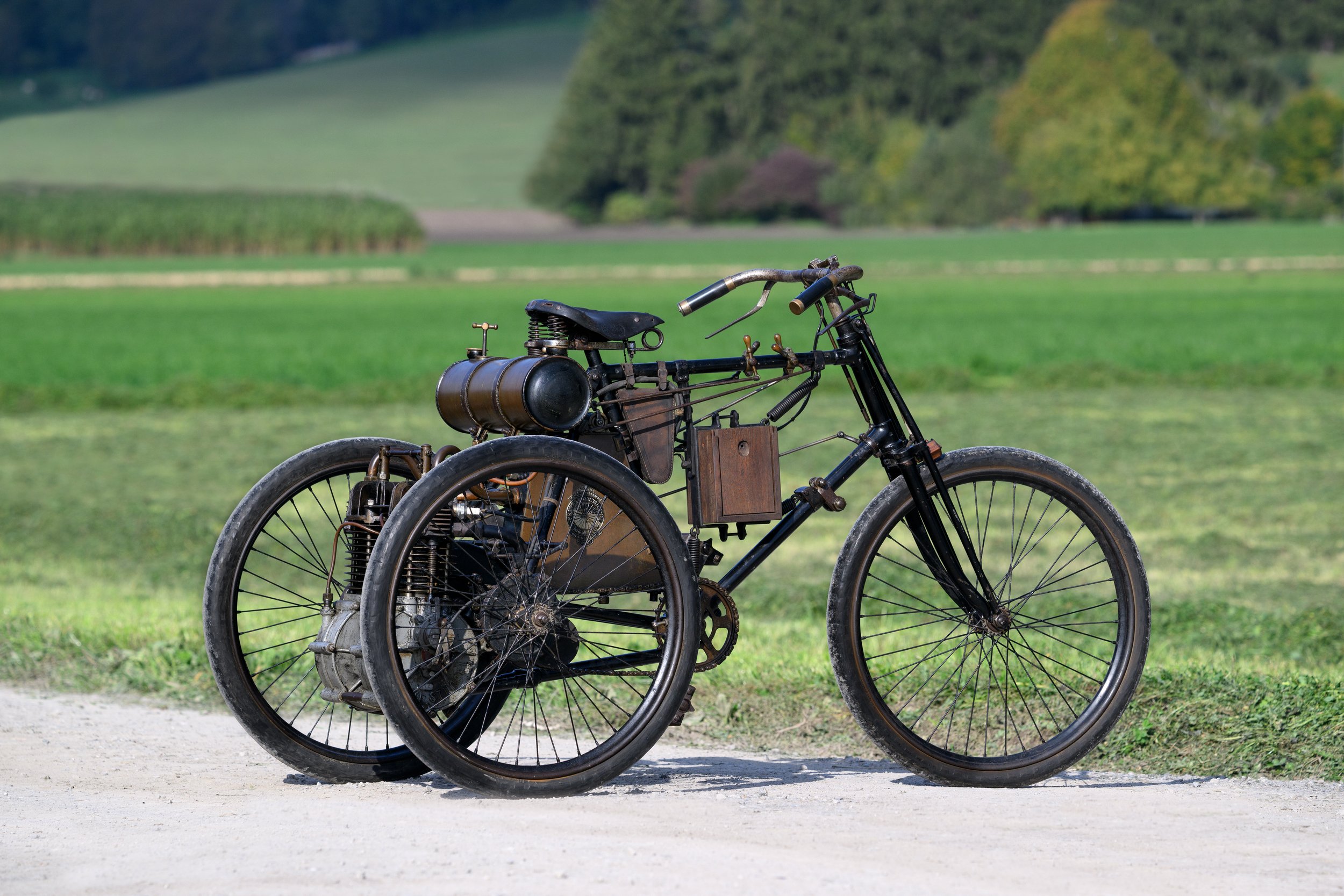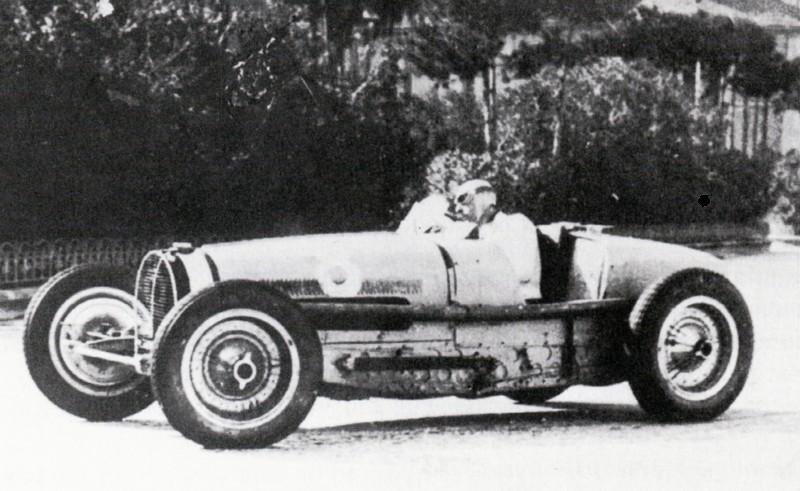Bugatti was – and Remains – A Thoroughbred Marque Like No Other.
On September 1-3, 2023, Hampton Court Palace in west London, UK, will play host to an exquisite assortment of the rarest and most coveted Bugattis as part of The Concours of Elegance, sponsored by A. Lange & Söhne.
The 11th annual Concours of Elegance will be graced with these thoroughbred French vehicles, known as "le pur-sang des automobiles," as a tribute to Ettore Bugatti, a master of elegance and invention. Although he started his own business in 1909, his talent dates all the way back to the twin-engined racing tricycle he developed as a young apprentice for the Italian company Prinetti & Stucchi.
Automobiles Ettore Bugatti's heyday came to an end in 1952 after designing some of the models that are still today some of the most expensive and coveted in the world. However, the name was revived as Bugatti Automobili SpA in 1987 by Italian businessman Romano Artioli, leading to the release of the amazing EB110 GT hypercar. The narrative went on after the Volkswagen Group bought the brand in 1998, and the Concours of Elegance will feature vehicles from each of the marque's chapters.
Here are just a few of the Bugattis that will adorn Hampton Court Palace's Royal Lawns.
1897 Prinetti & Stucchi Tricycle
This odd-looking horse is really a very important and historic vehicle since it was this modified vintage racing car that launched a young Ettore Bugatti on the way to iconic recognition in the automobile industry. At the request of the Automobile Club of Italy, young Ettore's employer Prinetti & Stucchi, who made licensed DeDion tricycles, was tasked with creating a twin-engined racing version.
TIM SCOTT FLUID IMAGES: 1897 Prinetti - Stucchi Tricycle
He accomplished this with amazing accomplishment. at spite of extremely tough opposition, his Bugatti Type 1 went on to win its maiden race at the 1899 Reggio Emili, demonstrating technical prowess and invention well beyond his young age. In doing so, it created a world record for the fastest average speed over 90 kilometers, setting the bar for Ettore's many amazing vehicles and successes in motor sports that would come after.
1934 Bugatti Type 59
The 1934 Type 59, a member of Switzerland's Pearl Collection, was created in response to growing rivalry in motor racing from manufacturers like Mercedes-Benz and Alfa Romeo. With its amazing "piano-wire" wheels, lowered body (which lowers the center of gravity), larger wheelbase, and supercharged straight-eight, it was and still is regarded as both a technological wonder and a work of industrial art. The T59, which served as Bugatti's final Grand Prix vehicle, is regarded as the most exquisite pre-war competitive vehicle ever. There were only six produced, and this one finished third at the Monaco Grand Prix and first overall in Belgium.
1934 Bugatti T59 - Car photo of Rene Dreyfus at Monaco
In order to prepare it for sports car racing, its supercharger was later removed, a dry-sump gearbox was added, and its chassis and exterior underwent significant revisions. After a string of victories, it was crowned the quickest sports vehicle in France and even spent some time in King Leopold III of Belgium's stable. This historically significant, one-of-a-kind automobile, which is presented in excellent original condition, epitomizes the mysterious allure of the Bugatti brand.
1935 Bugatti Type 57 Stelvio
Production of the Type 57 grand tourer by Bugatti lasted from 1934 until 1940, excluding the Second World War. It was a brand-new design by Ettore Bugatti's son Jean, who at this time was employed by the business. It shared a 3.3-liter engine with the Type 59 GP vehicles, but as was customary for the brand, the T57 experienced multiple technical advancements over the course of its lifespan and was made available in a variety of roofed and roofless bodystyles, many of them customized.
1935 Bugatti T57 Stelvio -TIM SCOTT FLUID IMAGES
The T57 was produced in 710 units, both in its standard configuration and in reduced (Surbaissé), T57S, and SC (Compresseur - supercharged) guises. The cabriolet known as the Stelvio, which is named after a pass in the Eastern Alps, will be on display at Hampton Court Palace.
1936 Bugatti Type 57S Atalante
Chassis No. 57502 was given brand-new to Earl Howe, a co-founder of the British Racing Drivers' Club, through UK Bugatti agent Sorel of London. It was one of just 17 Bugatti Type 57S models produced with two-seater Atalante coupé coachwork. After then, the automobile was sold a few times until being purchased in 1955 by Dr. Harold Carr of Newcastle-upon-Tyne. He stored the 57S in 1960, and it stayed there unaltered until his passing in 2007.
1936 Bugatti T57S Atalante - TIM SCOTT FLUID IMAGES
After being entirely repaired, it was later found again and added to the Pearl Collection, where it has resided ever since.
1994 Bugatti EB110 GT
Romano Artioli was an ambitious Italian businessman who realized his aim with the aid of ex-Lamborghini Miura engineers and notable figures in the automotive industry like Paolo Stanzani and Nicola Materazzi. His brand-new EB110 GT hypercar project dominated the supercar market for several years in the 1990s because of its impressive 553 horsepower quad-turbo 3.5-litre V12 and four-wheel drive system. The even more powerful, track-oriented Super Sport version produced a then-remarkable 602bhp.
1994 Bugatti EB110 GT
However, Artioli's attempt to revive the Bugatti moniker finally failed. Just 139 EB110s were produced at the Modena plant Campogalliano before the company was finally forced to close its doors in 1995 due to financial troubles, one of which was purchased by Michael Schumacher. One of the 84 road-biased GT variations constructed is chassis 39065, the one on display at the Concours d'Elegance. It had a dual-tone interior of grey leather and Grigio Chiaro exterior paint from the factory. The Super Sport's lightweight wheels and front bumper were also included.
2022 Bugatti Centodieci
2019 will mark Bugatti's 110th anniversary. To commemorate this milestone in its legacy of extraordinary performance and design, the legendary French manufacturer—by this point owned by Volkswagen Group—created a limited-edition vehicle. In 2022, the Centodieci began to be produced. The Pearl Collection's example, one of just ten to be constructed, epitomizes contemporary Bugatti and was influenced by its EB110 ancestor.
02 BUGATTI CENTODIECI
Its 1577bhp 8.0-litre W16 engine gives it 0-62 mph acceleration in 2.4 seconds and a (restricted) peak speed of 236 mph; this is practically unmatched performance. It's appropriate that the brand's most recent model on display at the Concours of Elegance performs the same way as many of the vehicles in Bugatti's history reflected the technical frontiers of the time they were constructed.
The September Concours of Elegance will feature a variety of rare and spectacular concours vehicles as well as special features like additional exhibits from Switzerland's Pearl Collection, Thirty Under 30, the all-female Levitt Concours, and Junior Concours in addition to these exquisite Bugattis. Around 1000 more cars will be brought together for the event in addition to the major exhibits for a number of glitzy attractions.
James Brooks-Ward, Concours of Elegance CEO, said: “Bugatti was – and remains – truly le pur-sang des automobiles, a thoroughbred marque like no other. The Concours of Elegance is absolutely delighted to host such a comprehensive display of exquisite motor cars from throughout the brand’s history. From a teenage Ettore Bugatti’s very earliest creation – the 1897 Prinetti & Stucchi Tricycle, or Bugatti Type 1 – through to the Centodieci, masterminded by the modern-day Bugatti company in 2019 to celebrate the brand’s 110th anniversary, the cars on display represent the pinnacle of engineering brilliance, breath-taking design and technical innovation.”
Discover More: Concours of Elegance






